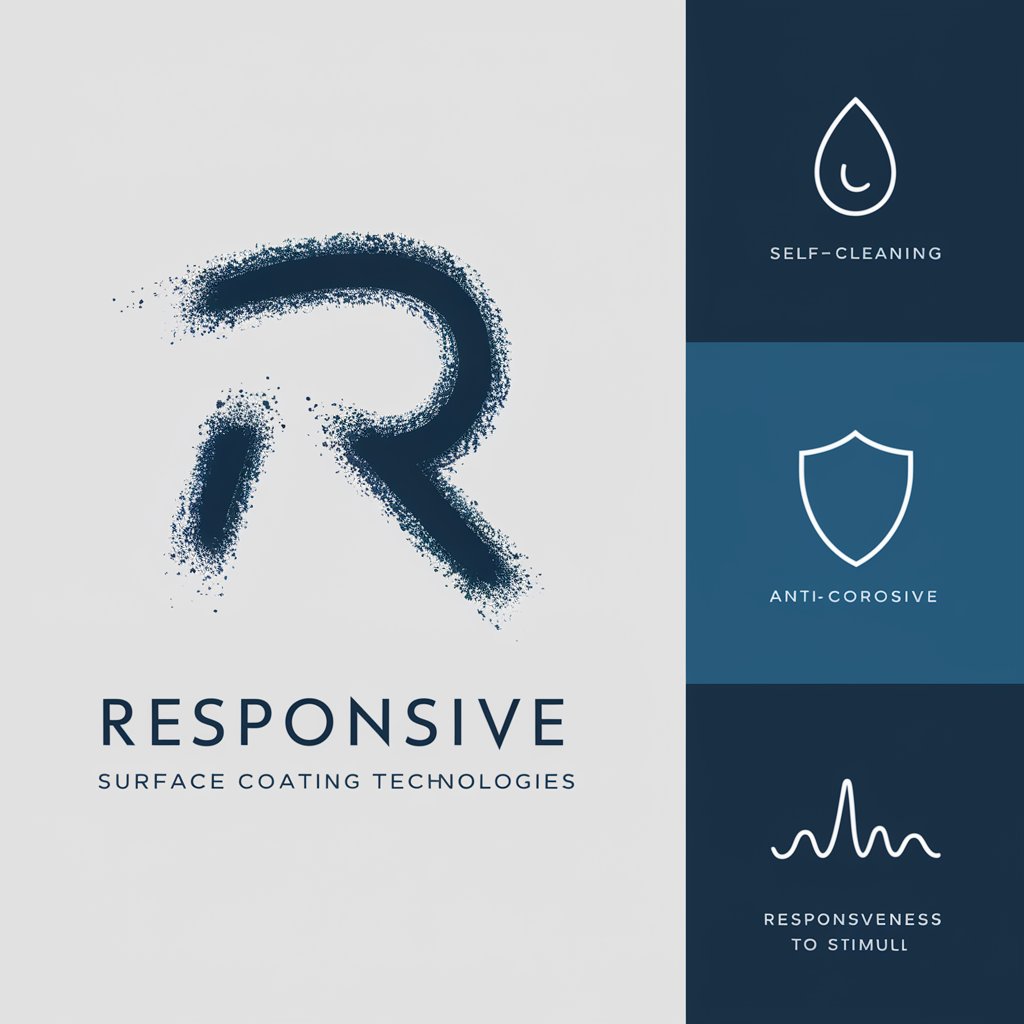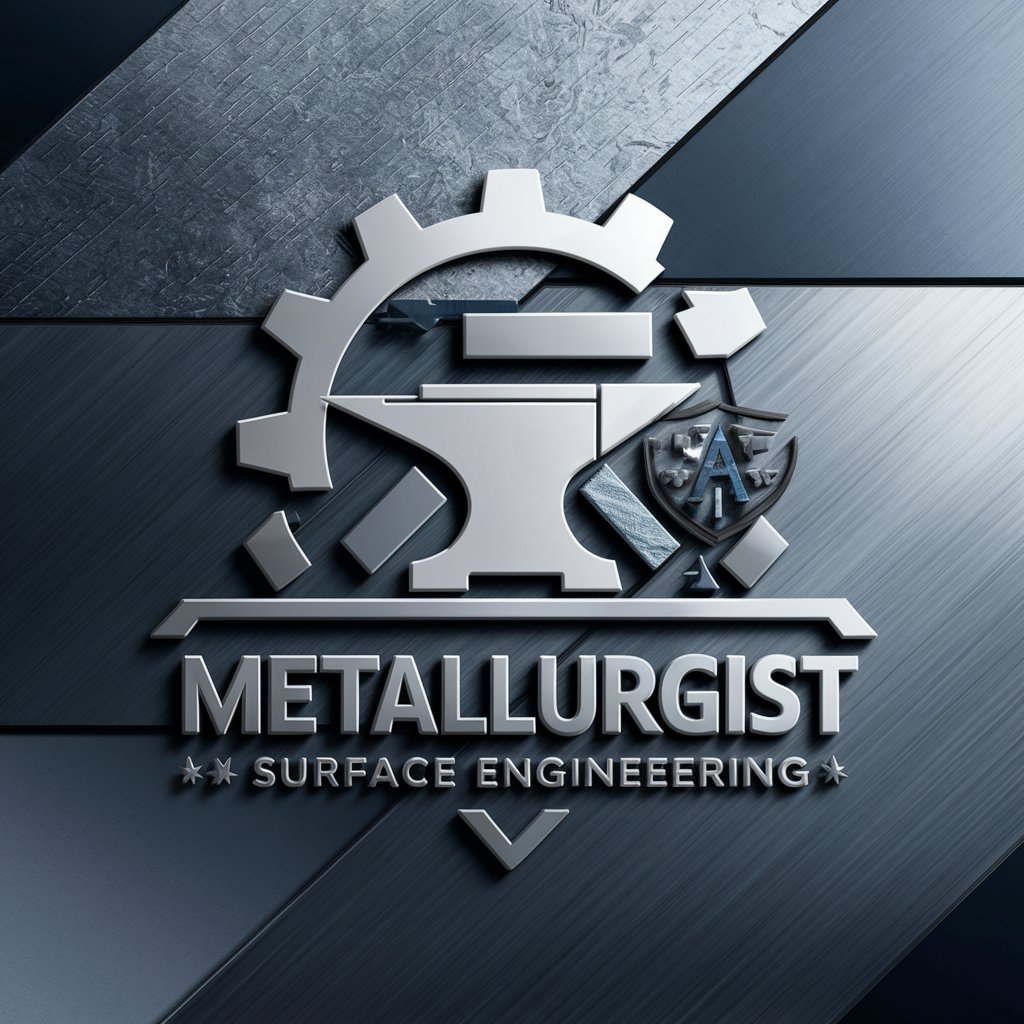Responsive Surface Coating Technologies - Trial, Advanced Coatings

Welcome to the world of advanced surface coating technologies!
Innovating surfaces with AI-driven technology.
Can you explain the latest advancements in self-cleaning surface technologies?
What are the key benefits of anti-corrosive coatings in industrial applications?
How do responsive coatings work and what are their potential applications?
Can you provide an overview of current research trends in responsive surface technologies?
Get Embed Code
Overview of Responsive Surface Coating Technologies
Responsive Surface Coating Technologies encompass a broad range of innovative coatings designed to respond to environmental stimuli such as temperature, pH, moisture, or light. These technologies are engineered to offer surfaces dynamic properties like self-cleaning, anti-corrosion, anti-fouling, and smart healing capabilities. A quintessential example is a self-cleaning coating that mimics the lotus leaf's natural water repellency, enabling surfaces to clean themselves when exposed to water or light. Another scenario involves anti-corrosive coatings that release corrosion inhibitors in response to pH changes, offering proactive protection for metal surfaces in harsh environments. These responsive coatings are meticulously designed to adapt their behavior or properties, providing enhanced performance and longevity for a wide array of applications across various industries. Powered by ChatGPT-4o。

Core Functions and Real-World Applications
Self-Cleaning
Example
Photocatalytic titanium dioxide coatings
Scenario
Applied on building facades and windows, these coatings use sunlight to break down organic dirt, pollutants, and even pathogens, significantly reducing maintenance costs and improving air quality.
Anti-Corrosive
Example
pH-sensitive polymer coatings
Scenario
Used on pipelines and marine structures, these coatings detect and counteract corrosion triggers by releasing inhibitors, extending the infrastructure's lifespan in corrosive environments.
Anti-Fouling
Example
Zwitterionic coatings
Scenario
Coatings applied on ship hulls and underwater sensors that prevent biofouling, improving fuel efficiency for vessels and ensuring accurate data collection from sensors.
Thermochromic
Example
Vanadium dioxide coatings
Scenario
Smart windows coated with these materials adjust transparency based on temperature, enhancing energy efficiency by moderating indoor temperatures without active cooling or heating.
Self-Healing
Example
Microencapsulated healing agents
Scenario
Automotive paints and aerospace coatings that encapsulate healing agents, which are released upon damage to repair scratches or cracks, thereby preserving appearance and integrity.
Target User Groups for Responsive Surface Coating Technologies
Construction and Architecture
Professionals and companies in these fields benefit from coatings that reduce building maintenance, enhance energy efficiency, and protect structures from environmental damage.
Automotive and Aerospace Industries
Manufacturers and maintenance teams value coatings that offer protection against corrosion, reduce drag, and self-repair, leading to longer lifespan and reduced operational costs.
Marine Engineering
Shipbuilders and marine operators utilize anti-fouling and anti-corrosive coatings to improve vessel performance and durability in marine environments.
Environmental Management
Organizations focused on sustainability adopt responsive coatings to mitigate environmental impact through self-cleaning surfaces that reduce the need for chemical cleaners and coatings that improve energy efficiency.

Using Responsive Surface Coating Technologies: A Guide
Initial Exploration
Start your journey at yeschat.ai for a hassle-free trial that requires no sign-up or ChatGPT Plus subscription, offering direct access to cutting-edge coating technologies.
Identify Your Needs
Assess your specific requirements such as surface protection, self-cleaning properties, or environmental responsiveness to select the most appropriate coating technology.
Application Preparation
Prepare the surface by ensuring it is clean, dry, and free of any contaminants. This ensures optimal adhesion and effectiveness of the coating.
Technology Application
Apply the selected coating following the manufacturer's guidelines. This might involve spraying, dipping, or painting, depending on the product's specifications.
Performance Evaluation
After application, evaluate the coating's performance under the intended conditions. Consider conducting regular inspections to assess longevity and effectiveness.
Try other advanced and practical GPTs
Africa: Beyond the Surface
Exploring African Heritage through AI

My Personal Trainer
Revolutionizing fitness with AI guidance

My Travel Coordinator
Simplifying travel with AI-powered planning.

Sales Opportunity Task Assistant
Enhancing Salesforce with AI-driven insights

Fashion Maven
Empowering Your Style with AI

Urban Surface Water Management Tutor
Empowering Urban Water Solutions with AI

Sales Play Effectiveness Tracker
Elevate your sales game with AI-driven insights.

Appvance Oracle
Revolutionize Testing with AI

Surface Insights
Deciphering Complexity with AI-Powered Insights

Surface Engineering Sage
AI-powered Surface Engineering Expertise

Argus
Challenge Your Views with AI

Argue Master
Master debates with AI-powered arguments

FAQs on Responsive Surface Coating Technologies
What are Responsive Surface Coating Technologies?
Responsive Surface Coating Technologies encompass a range of coatings designed to alter their properties in response to environmental stimuli such as temperature, pH, or light, offering applications in self-cleaning surfaces, corrosion resistance, and smart textiles.
How do self-cleaning coatings work?
Self-cleaning coatings operate by leveraging superhydrophobic properties or photocatalytic reactions to break down organic compounds, allowing dirt and other materials to be easily washed away with water or shed off with light exposure.
Can these coatings be used in extreme environments?
Yes, many responsive coatings are engineered for extreme conditions, offering high temperature resistance, chemical stability, and durability in harsh environments, making them suitable for industrial, aerospace, and marine applications.
Are responsive coatings environmentally friendly?
Many responsive coatings are developed with eco-friendly materials and processes, aiming to reduce toxic emissions, improve energy efficiency, and minimize environmental impact.
How can I customize a coating for a specific application?
Customization often involves working with manufacturers to tailor coating properties such as responsiveness, adhesion, and durability to specific environmental conditions or substrates, through the adjustment of chemical formulations or application techniques.
